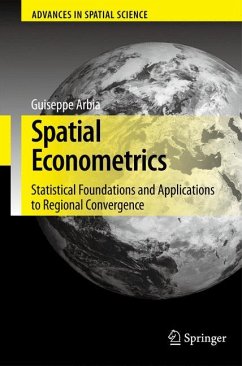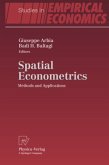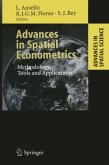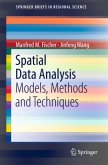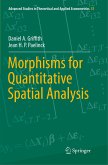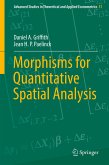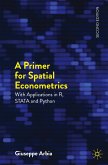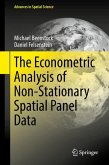This book bridges the gap between economic theory and spatial econometric techniques. It is accessible to those with only a basic statistical background and no prior knowledge of spatial econometric methods. It provides a comprehensive treatment of the topic, motivating the reader with examples and analysis. The volume provides a rigorous treatment of the basic spatial linear model, and it discusses the violations of the classical regression assumptions that occur when dealing with spatial data.
In recent years the so-called new economic geography and the issue of regional economic convergence have increasingly drawn the interest of economists to the empirical analysis of regional and spatial data. However, even if the methodology for econometric treatment of spatial data is well developed, there does not exist a textbook theoretically grounded, well motivated and easily accessible to eco- mists who are not specialists. Spatial econometric techniques receive little or no attention in the major econometric textbooks. Very occasionally the standard econometric textbooks devote a few paragraphs to the subject, but most of them simply ignore the subject. On the other hand spatial econometric books (such as Anselin, 1988 or Anselin, Florax and Rey, 2004) provide comprehensive and - haustive treatments of the topic, but are not always easily accessible for people whose main degree is not in quantitative economics or statistics. This book aims at bridging the gap between economic theory and spatial stat- tical methods. It starts by strongly motivating the reader towards the problem with examples based on real data, then provides a rigorous treatment, founded on s- chastic fields theory, of the basic spatial linear model, and finally discusses the simpler cases of violation of the classical regression assumptions that occur when dealing with spatial data.
Hinweis: Dieser Artikel kann nur an eine deutsche Lieferadresse ausgeliefert werden.
In recent years the so-called new economic geography and the issue of regional economic convergence have increasingly drawn the interest of economists to the empirical analysis of regional and spatial data. However, even if the methodology for econometric treatment of spatial data is well developed, there does not exist a textbook theoretically grounded, well motivated and easily accessible to eco- mists who are not specialists. Spatial econometric techniques receive little or no attention in the major econometric textbooks. Very occasionally the standard econometric textbooks devote a few paragraphs to the subject, but most of them simply ignore the subject. On the other hand spatial econometric books (such as Anselin, 1988 or Anselin, Florax and Rey, 2004) provide comprehensive and - haustive treatments of the topic, but are not always easily accessible for people whose main degree is not in quantitative economics or statistics. This book aims at bridging the gap between economic theory and spatial stat- tical methods. It starts by strongly motivating the reader towards the problem with examples based on real data, then provides a rigorous treatment, founded on s- chastic fields theory, of the basic spatial linear model, and finally discusses the simpler cases of violation of the classical regression assumptions that occur when dealing with spatial data.
Hinweis: Dieser Artikel kann nur an eine deutsche Lieferadresse ausgeliefert werden.
From the reviews: "Arbia's relatively short text contains six chapters devoted to spatial econometrics, and the author indicates it could be used 'as a textbook for post-graduate introductory course of around 20/30 hours, or as a reference book for post-graduate students engaged in Ph.D. work on quantitative economics (or other social sciences), involving spatial econometric estimation problems' ... ." (James P. LeSage, Journal of Regional Science, Vol. 47 (3), 2007)

